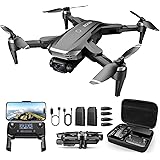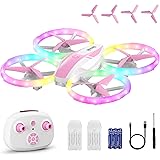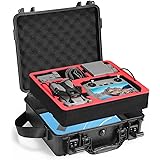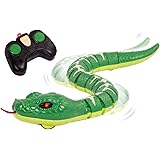Ever wondered what truly makes a DIY FPV quadcopter take to the skies, responding with precision to your every command? As the accompanying video vividly illustrates, dissecting the anatomy of a custom-built drone reveals an intricate symphony of specialized components working in perfect harmony. Beyond the initial impression of complex wiring, understanding the core functionality of each part demystifies the entire build process, transforming a daunting task into an accessible engineering endeavor for any enthusiast.
The Foundational Structure: Carbon Fiber Frames and Brushless Motors
At the heart of any robust FPV quadcopter is its frame, the skeletal structure to which all other components affix. Modern frames predominantly leverage carbon fiber, a material prized for its exceptional strength-to-weight ratio. This choice is critical: a lighter frame contributes directly to extended flight times and increased agility, while its inherent strength provides crucial resilience against the inevitable impacts associated with aggressive FPV flying and learning.
Attached to each arm of the frame are the brushless motors, the primary actuators responsible for generating thrust. Unlike brushed DC motors, brushless motors offer superior efficiency, durability, and precise control, making them indispensable for high-performance drone applications. Each motor features three phase wires, which must be meticulously soldered to an Electronic Speed Controller (ESC) to facilitate its operation. This initial connection forms the backbone of the propulsion system, enabling the flight controller to command individual motor speeds.
Electronic Speed Controllers (ESCs): Orchestrating Propulsion
The Electronic Speed Controller, or ESC, acts as the vital intermediary between the flight controller and the motor, translating digital signals into the precise electrical pulses required to spin a brushless motor. Each motor requires its own dedicated ESC, though contemporary designs often integrate four individual ESCs into a single unit, known as a 4-in-1 ESC, for a cleaner build and reduced wiring complexity. These devices are sophisticated pieces of hardware, capable of rapidly adjusting motor speed, direction, and braking, all critical for stable and responsive flight.
The ESCs receive their power directly from the Power Distribution Board (PDB), which ensures an even and reliable supply of current from the main battery. Correct calibration and configuration of these ESCs are paramount, as synchronization issues can lead to unstable flight characteristics or even complete loss of control. Understanding their function illuminates how a drone can achieve differential thrust, allowing for complex maneuvers like pitching, rolling, and yawing.
Powering the Flight: LiPo Batteries and Power Distribution
A high-performance FPV quadcopter demands an equally high-performance power source, which typically comes in the form of a Lithium Polymer (LiPo) battery. LiPo batteries are celebrated in the RC hobby for their high energy density, meaning they pack a substantial amount of power relative to their weight and size. Common voltages for these packs in racing drones are 11.1 volts (3S) or 14.8 volts (4S), with higher voltages offering more raw power but also requiring careful component selection.
The XT60 connector, a ubiquitous yellow plastic connector with robust terminals, serves as the primary interface for connecting the LiPo battery to the drone’s electrical system. This connector plugs into the Power Distribution Board (PDB), the central hub responsible for distributing the battery’s voltage to all other components. While some modern flight controllers integrate PDB functionality, a dedicated PDB often includes features like voltage regulation and filtering, which are crucial for stable operation of sensitive electronics.
Voltage Regulation and Component Compatibility
The raw voltage from a LiPo battery (e.g., 14.8V) is rarely suitable for all components on a drone. Many critical parts, such as the flight controller, cameras, and some video transmitters, operate at lower, regulated voltages like 5 volts or 12 volts. This is where the PDB’s voltage regulator modules (VRMs) come into play, stepping down the battery voltage to prevent damage to sensitive electronics. These integrated regulators ensure that each component receives its appropriate power supply, safeguarding against overvoltage and ensuring optimal performance.
The ability to provide stable 5V and 12V outputs is a hallmark of a well-designed PDB, offering versatility for a wide array of cameras, video transmitters, and other auxiliary modules. Without proper voltage regulation, connecting a 5V component directly to a 14.8V battery would almost certainly result in irreversible damage. This intricate power management system underscores the precision engineering required in FPV drone building.
The Brain of the Quadcopter: The Flight Controller (FC)
Often considered the brain of the FPV quadcopter, the Flight Controller (FC) is a sophisticated microcontroller board packed with sensors and processing power. Mounted atop the PDB (or integrated with it) and often separated by nylon standoffs, the FC is responsible for interpreting pilot commands, stabilizing the aircraft, and executing complex flight algorithms. Its array of onboard sensors, including accelerometers and gyroscopes, constantly measures the drone’s orientation and movement thousands of times per second.
The FC receives control inputs from the radio receiver and translates them into individual speed adjustments for each motor, communicated via signals sent to the ESCs. For instance, pushing the pitch stick forward on the transmitter signals the FC to increase the speed of the rear motors and decrease the speed of the front motors, tilting the drone forward and initiating forward flight. Modern FCs run advanced firmware like Betaflight, Kiss, or ArduPilot, which allow for extensive customization and tuning of flight characteristics.
Radio Receiver (RX): The Link to Pilot Control
For a pilot to command their drone, a reliable communication link is essential, established by the radio receiver (RX). This small component connects directly to the flight controller, receiving encrypted radio signals transmitted from the pilot’s remote control, or transmitter (TX). These signals convey every stick input, switch position, and parameter change, which the FC then interprets to execute desired maneuvers. Most receivers feature at least one or two antennas to optimize signal reception and range.
Like other components, the receiver requires power, typically 5 volts, which it draws from the flight controller or directly from the PDB. The signal cable carries the crucial input data to the FC, completing the control loop. Without a functional receiver and a paired transmitter, the FPV quadcopter remains an inert collection of parts, unable to respond to any pilot command.
First Person View (FPV) System: Camera and Video Transmitter (VTX)
The immersive experience of FPV flying is made possible by two key components: the FPV camera and the video transmitter (VTX). The FPV camera, a small, lightweight module mounted at the front of the drone, captures a real-time visual feed of the drone’s perspective. This live video signal is then routed to the VTX, which wirelessly broadcasts it to the pilot’s FPV goggles or monitor. The instantaneous transmission allows the pilot to “see” as if they were onboard the aircraft, enabling precise navigation and exhilarating aerial maneuvers.
Both the camera and VTX require power, typically 5 volts, often supplied directly from dedicated ports on the PDB or FC. The VTX also features a signal input, usually a yellow or orange wire, which carries the video feed from the camera. Choosing a VTX with adjustable power output and diverse channel options is crucial for minimizing interference, especially when flying with multiple pilots in a race scenario. The video signal from the VTX is then picked up by the antennas on the pilot’s goggles, completing the FPV circuit.
The Propellers: Generating Lift and Control
Finally, the most visible and mechanically active components of the FPV quadcopter are its propellers. Mounted directly onto the motors, these blades are responsible for generating the lift that allows the drone to fly. A critical aspect of multirotor design is the rotational direction of the propellers. In a standard quadcopter configuration, two propellers spin clockwise (CW) and two spin counter-clockwise (CCW), typically arranged diagonally opposite each other.
This alternating spin direction is essential for counteracting the rotational torque generated by each motor. If all propellers spun in the same direction, the entire drone would constantly rotate about its yaw axis. By having opposing pairs, the torques cancel each other out, allowing the flight controller to maintain a stable heading or intentionally induce yaw movements by subtly adjusting the speed of specific motor pairs. Propeller choice—material, pitch, and diameter—significantly impacts flight characteristics, from thrust and efficiency to responsiveness and acoustic profile.











